Abstract
Following 30 days of reinforcement for the bar press response of two white rats on 30-sec fixed-interval (FI), a DRL component was added so that a minimal interresponse time (IRT) for the reinforced response, in addition to the FI variable, was necessary for reinforcement. Marked control over response rate by the superimposed DRL requirement was demonstrated by an inverse hyperbolic function as the DRL component was increased from 1 to 24 sec within the constant 30-sec FI interval. Interresponse time and post-reinforcement (post-SR) “break” distributions taken at one experimental point (DRL = 24 sec) suggested that a more precise temporal discrimination was initiated by an SR than by a response, since the relative frequency of a sequence of two reinforced responses appeared greater than that of a sequence of a non-reinforced response followed by a reinforced one. This latter finding was confirmed with new animals in a follow-up experiment employing a conventional 24-sec DRL schedule.
Full text
PDF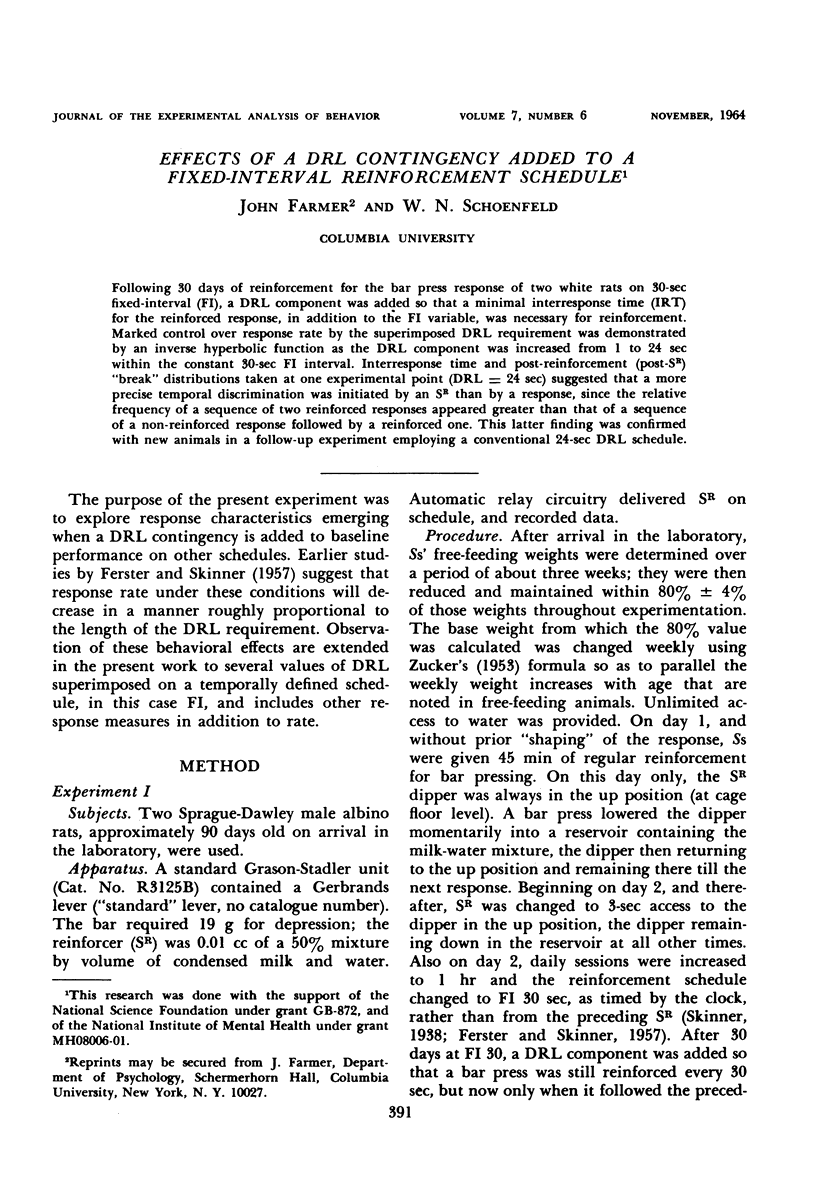
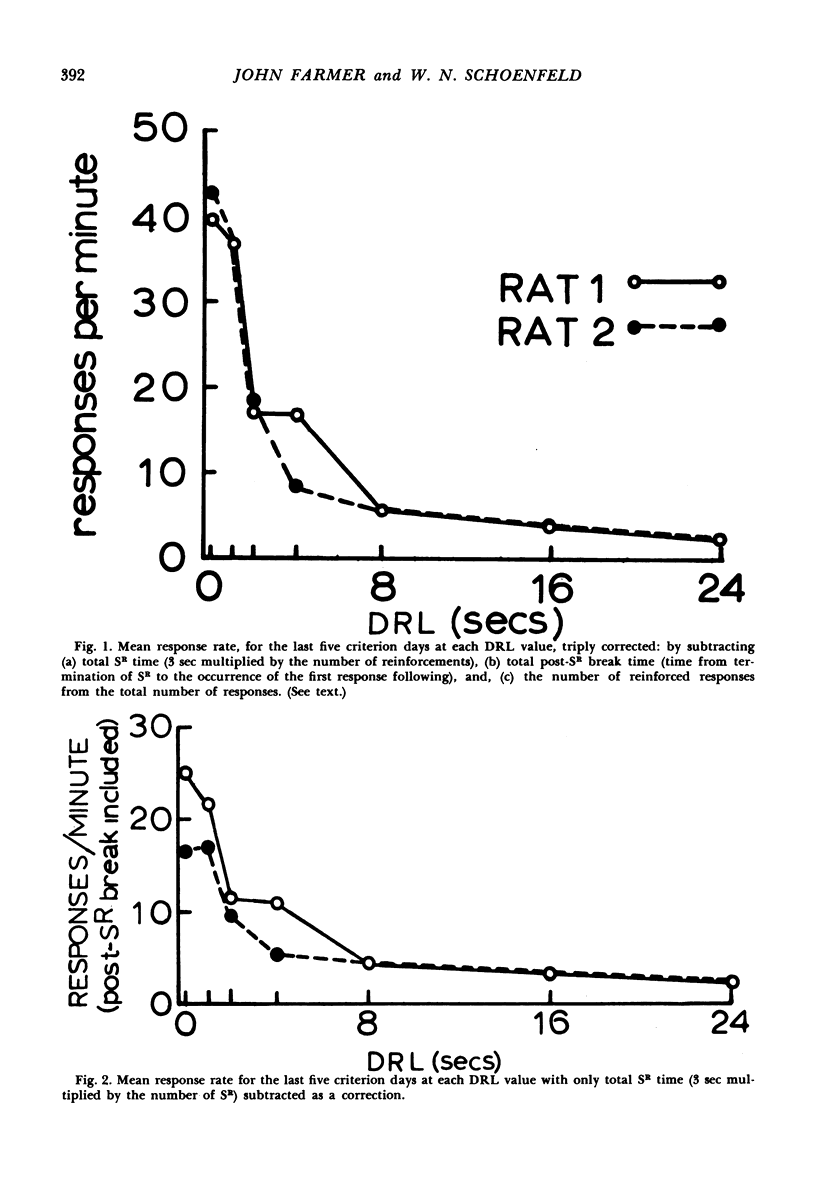
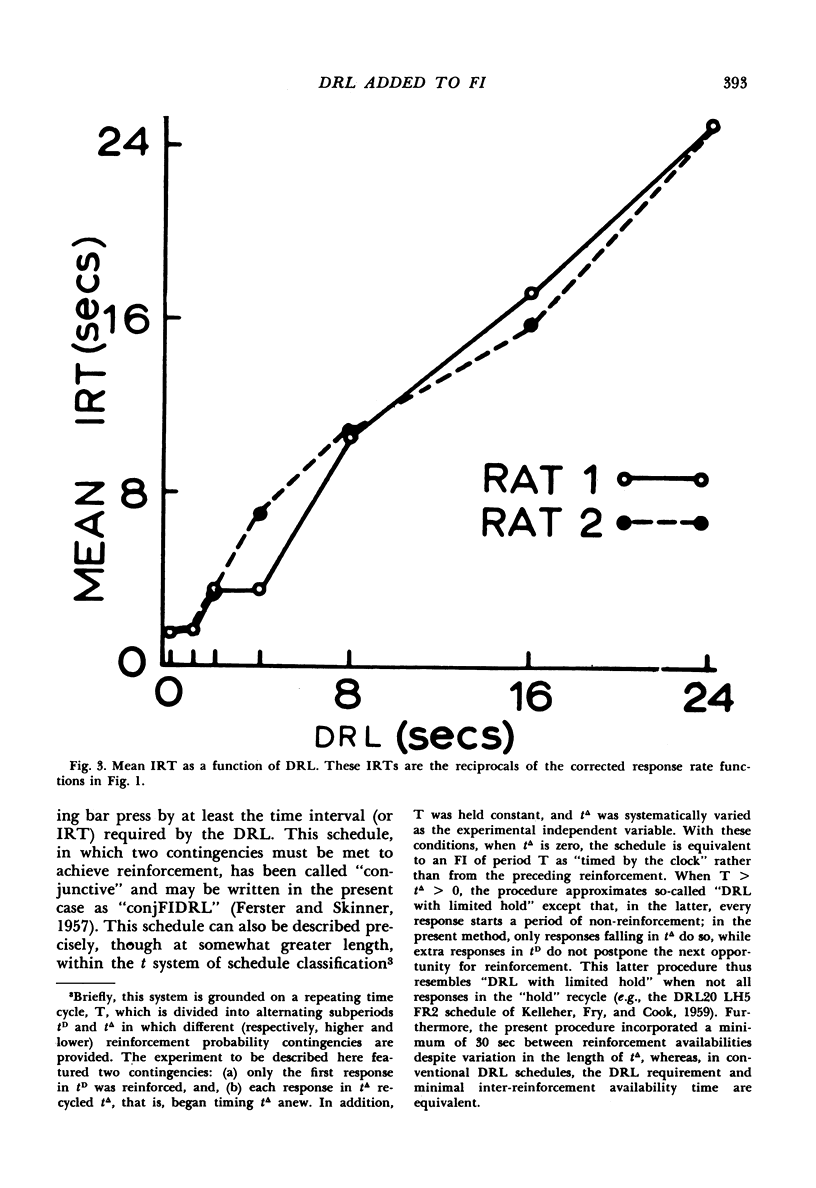
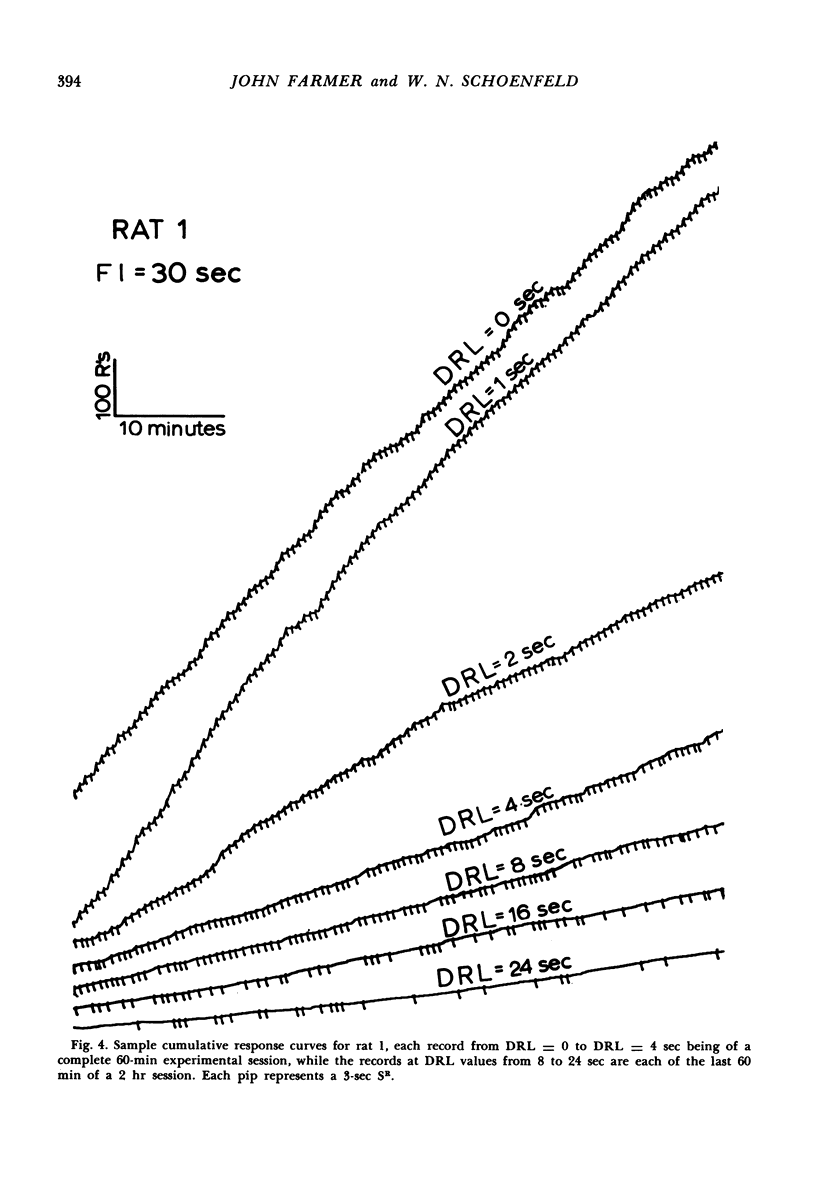
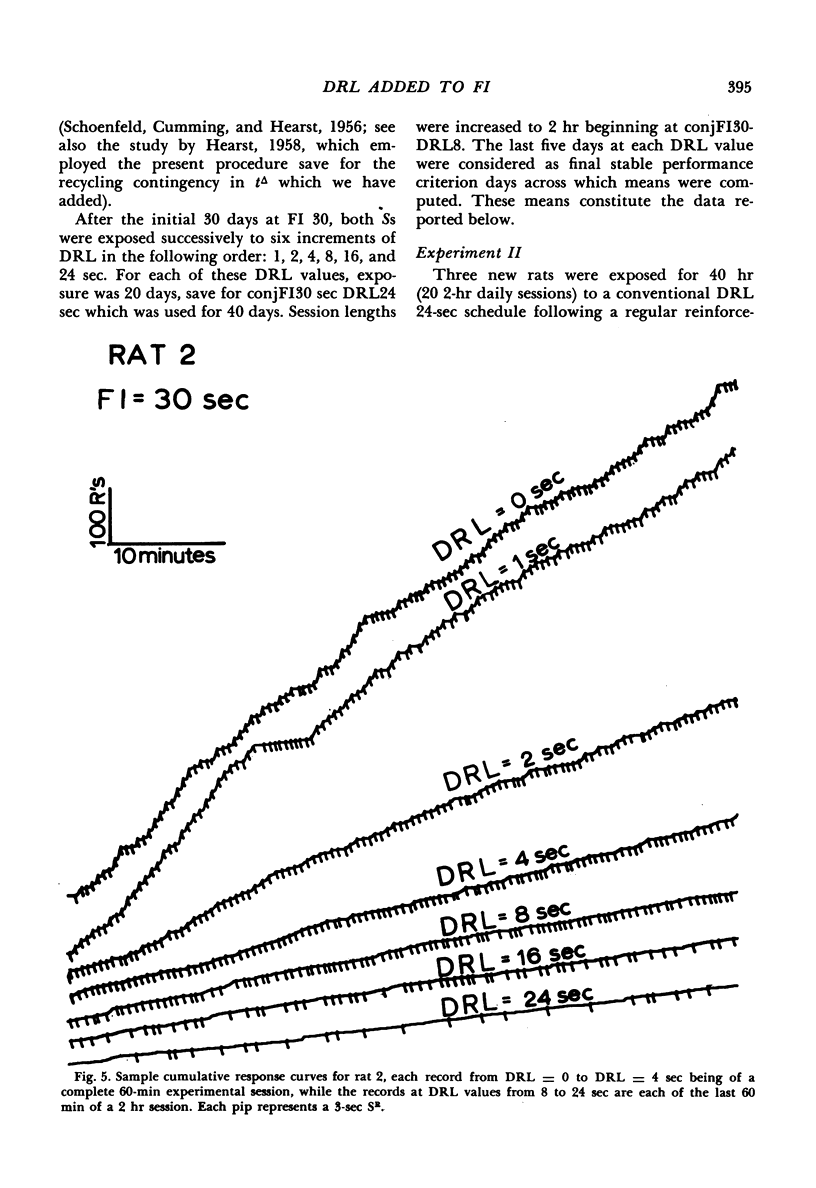
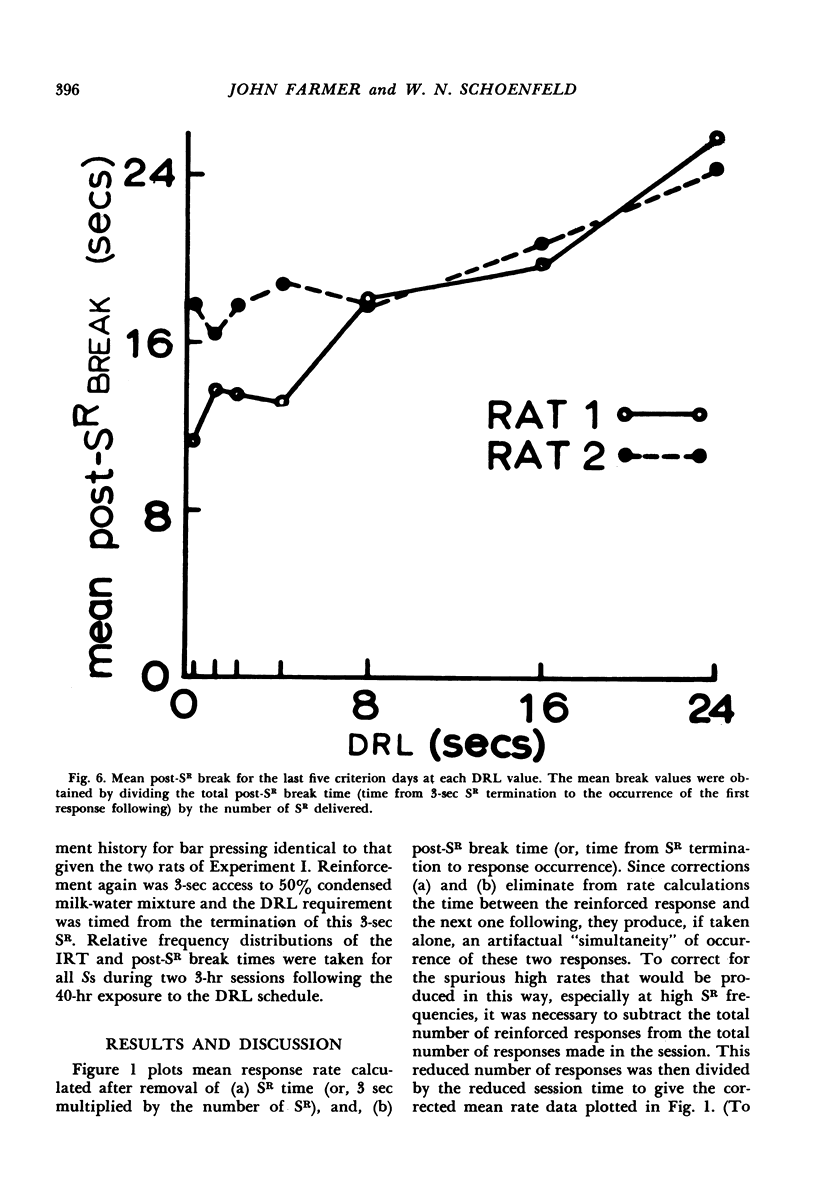
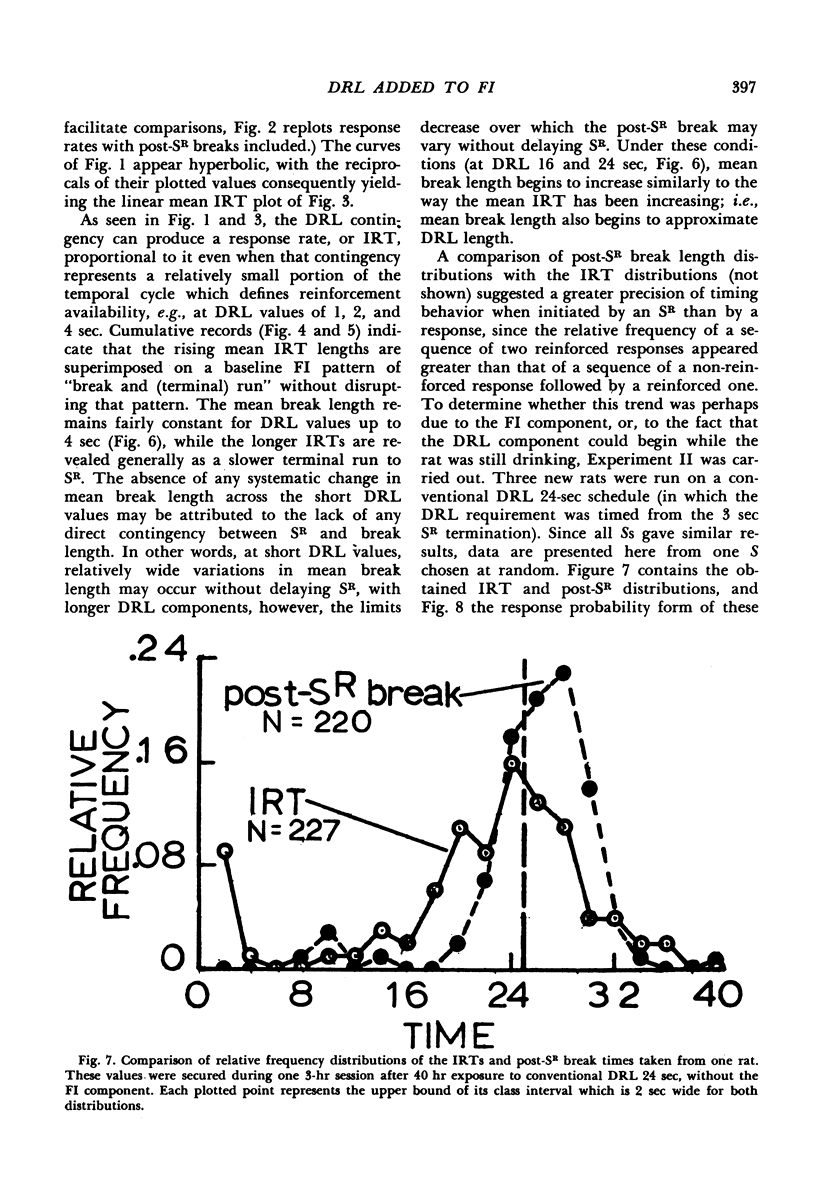
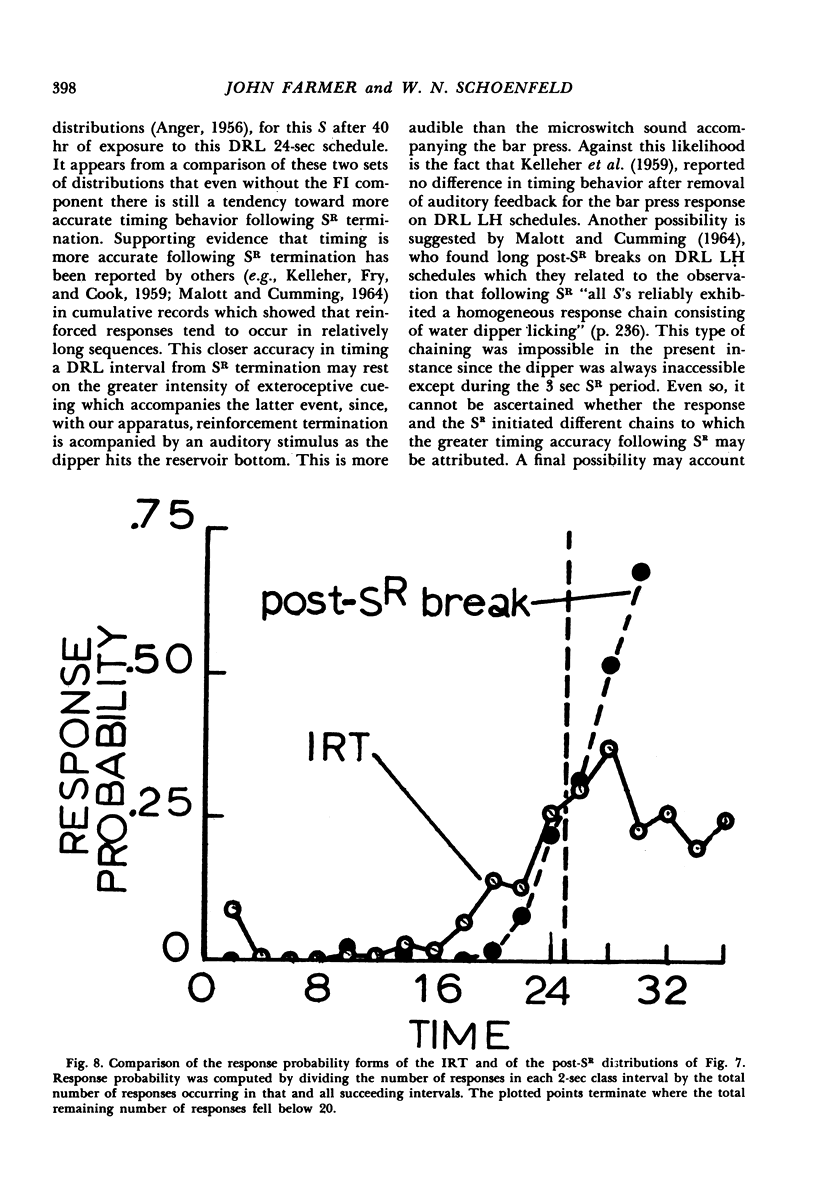
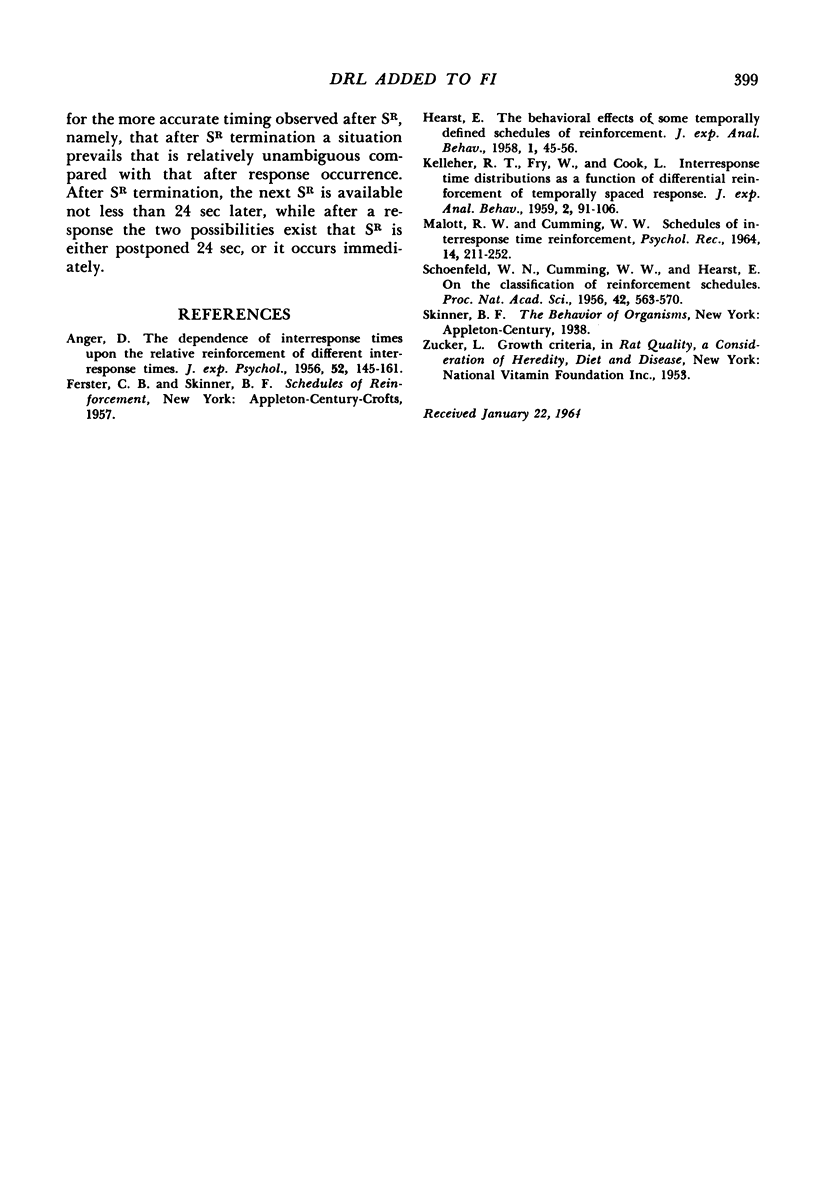
Selected References
These references are in PubMed. This may not be the complete list of references from this article.
- ANGER D. The dependence of interresponse times upon the relative reinforcement of different interresponse times. J Exp Psychol. 1956 Sep;52(3):145–161. doi: 10.1037/h0041255. [DOI] [PubMed] [Google Scholar]
- HEARST E. The behavioral effects of some temporally defined schedules of reinforcement. J Exp Anal Behav. 1958 Jan;1:45–55. doi: 10.1901/jeab.1958.1-45. [DOI] [PMC free article] [PubMed] [Google Scholar]
- KELLEHER R. T., FRY W., COOK L. Inter-response time distribution as a function of differential reinforcement of temporally spaced responses. J Exp Anal Behav. 1959 Apr;2:91–106. doi: 10.1901/jeab.1959.2-91. [DOI] [PMC free article] [PubMed] [Google Scholar]
- Schoenfeld W. N., Cumming W. W., Hearst E. ON THE CLASSIFICATION OF REINFORCEMENT SCHEDULES. Proc Natl Acad Sci U S A. 1956 Aug;42(8):563–570. doi: 10.1073/pnas.42.8.563. [DOI] [PMC free article] [PubMed] [Google Scholar]


